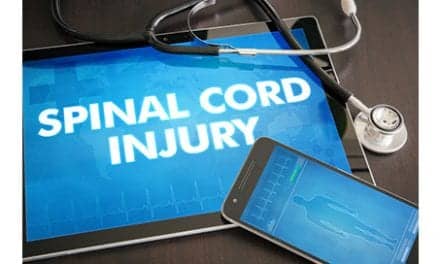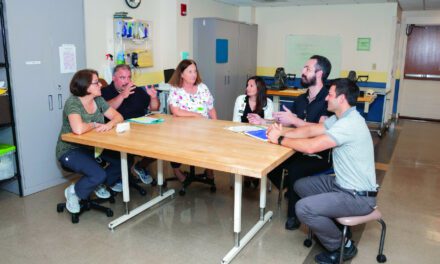Using a mouse model, researchers found that spinal cord injuries are more severe in elderly mice than in young adults, which a news release from Ohio State University indicates corroborates with previous anecdotal findings from clinical settings.
Specifically, researchers say immune cells in the central nervous system of elderly mice fail to activate an important signaling pathway, which in turn dramatically lowers chances for repair following injury.
The release reports that researchers also revealed a key messenger in that pathway is a receptor on the surface of microglia, immune system cells in the central nervous called into action by spinal cord injury (SCI) trauma.
According to researchers, in young mice the receptor is activated by microglia to recognize and use an inflammation-related signaling chemical found in the central nervous system post-SCI. The microglia in elderly mice reportedly do not activate the receptor at all.
Study results suggest that the difference in receptor activation holds consequences later in the recovery process. The release notes that types of cells sent to the injury site in young adult mice appear to have more value in the repair process than the cells that appear in elderly mice. A range of experiments traced the roots of these varying effects back to whether or not microglia activated the receptor.
Jonathan Godbout, PhD, associate professor of neuroscience at The Ohio State University, and senior author of the study, explains that the “microglia are regulated by several different cell types and different signals, and it appears a lot of those systems change with age.”
The results indicate that this more severe injury occurs in an aging animal, Godbout adds, and the difference in recovery is linked to the ability to express the receptor. Ultimately, “The consequence is that we have a different profile of cells at the injury site, and in aging mice, that environment is less reparative,” Godbout says.
The release notes that these differences at the cellular level were linked to differences in the characteristics of injury and recovery. Lesions on the injured spinal cord were 38% longer, on average, in elderly mice than in young adult mice. Additionally, older mice were unable to gain movement of their hind limbs by the time most younger mice had regained that mobility.
During the study, the alpha receptor, IL-4, was observed in the central nervous systems of both young adult and aging mice. The receptor sent signals to recruit additional repair cells called macrophages and monocytes to the injury sites. Only in young adult mice were these types of cells contributors to wound healing and clearing of debris, necessary inflammatory functions that help rather than harm, the release says.
Ashley Fenn, PhD, Ohio State, explains that the findings were surprising to researchers, as they expected to see higher levels of inflammatory cytokines in the aged mice.
“But in the aged mice with a spinal cord injury, we saw reduced levels of some inflammatory signals associated with a failure to reprogram the microglia with IL-4 toward a reparative profile. That’s how we figured out the IL-4 is unique in the spinal cord injury paradigm, that it induces an inflammatory response that appears to be beneficial,” Fenn says.
The release reports that the IL-4 in young adult mice also led to production of arginase, however significantly less arginase was found in injured elderly mice.
Godbout points out that there is some level of communication between the central nervous system microglia and the peripheral immune system’s macrophages.
“In our model, differences in that communication affected the ability to bring in cells to the site of the injury. Maybe the aging microenvironment brings in cells that are less beneficial,” Godbout says.
Source: Ohio State University





